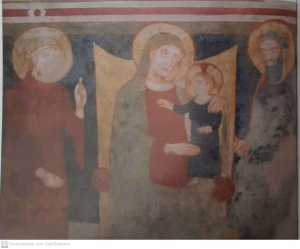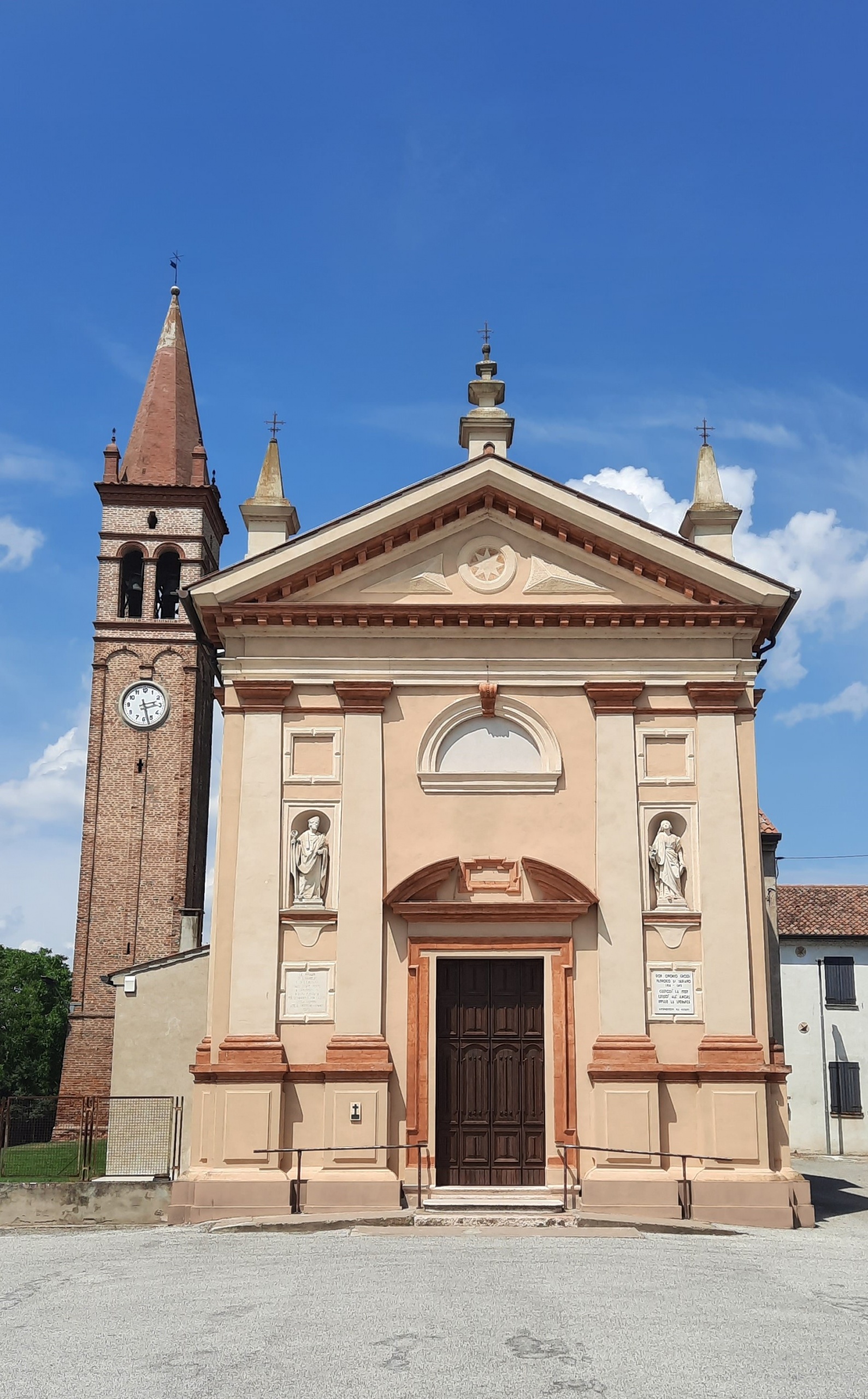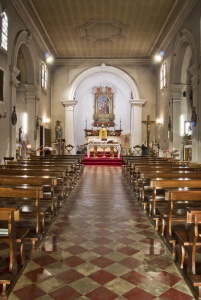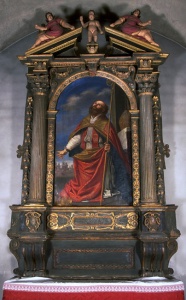
The fourteenth-century frescoes on the north wall are among the oldest, where a style emerges in which the solidity and monumentality of Giotto’s style emerges together with a Gothic language.
Madonna enthroned and saints
The Madonna is depicted on a throne and rests a hand on the shoulder of her Son, who seems to be turning in the direction of the Saint dressed in red, to the right of the Mother. The Saint on the left side with a black beard and hair, has a dark colored robe and probably wore a cloak, vaguely perceivable from the remaining pictorial traces. It is hypothesized that it could be the figure of Saint Maurelius, but it is difficult to identify both figures with certainty next to the throne due to the lack of any clear attributes.
Madonna with child enthroned and Saint
The Saint is depicted kneeling next to the Virgin whose mantle is draped in sinuous folds and her figure and that of the Child retain their volumetric physicality intact.








